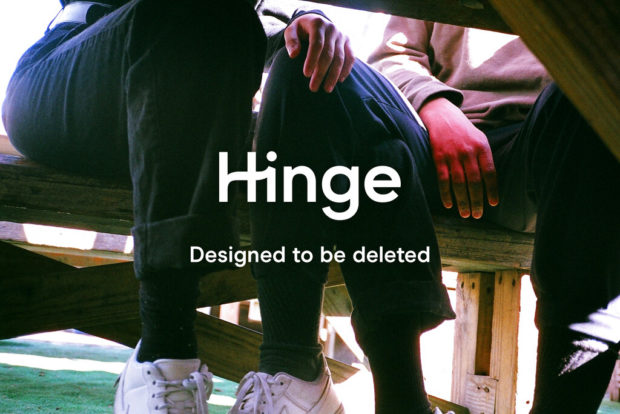
In this undated photo provided by Hinge is a page from the dating app. Justin McLeod, who launched Hinge in 2011, thinks that dating apps should be focused on getting people offline. Hinge’s tag line is “the app that’s designed to be deleted.” (Hinge via AP)
LONDON — While taboos surrounding online dating are long gone, some of today’s app users are sick of the endless swiping and virtual pen-paling that leads nowhere when it comes to long-term relationships, according to industry leaders who are responding with new ways to get users off their phones and out meeting people in the real world.
David Vermeulen is one such leader. His Inner Circle, launched in 2012, is more closely curating users looking for meaningful connections, and he’s hosting offline events in cities around the globe to help make that happen among his more than 2 million members. He said he saw a big shift in online dating attitudes toward the end of the decade as some people have become “Tinder tired.”
“They really now are looking for something more serious, something more genuine,” Vermeulen said.
Justin McLeod, who launched Hinge in 2011, shares Vermeulen’s view that dating apps should be focused on getting people offline. Hinge’s tag line is the app that’s “designed to be deleted.”
In 2016, Hinge intentionally removed the swipe option to encourage more interaction. When they were told that people felt overwhelmed by their number of choices, they created a “most compatible” function. That, he said, “really helps people focus and get out on dates faster.”
The Inner Circle plans to add a “Let’s Meet” button to speed up the pathway from app to real-life date.
“If you both click it, you can within the chat select days and venues that we propose and then you can go on a date really quickly. And I mean going out for a coffee. I mean, that’s the first step. But for a lot of people, it’s quite a big step and we tried to make that much more easy,” Vermeulen said.
His app also plans to add an automated response to anyone who just messages “Hi” as an introduction, which he said is often a dead-end to dating.
“We’re gonna say, OK, this is not the best start for a conversation. You have to do better,” Vermeulen said.
It’s not just the newer generation of apps that are adapting to changing dating attitudes. OkCupid is one of the original dating sites, started by two Harvard math graduates in 2004. Beginning life as a desktop website, it developed into an app with the advent of smartphones. Today, OkCupid boasts that it sets up 50,000 dates per week.
The site enforces certain restrictions to try and weed out those not interested in getting to that date. The company insists that users post more than one photo and puts them through a list of localized timely questions before a profile can be set up. So if you thought you should avoid talking politics or religion on a first date, it seems the tides are turning. Users can filter based on their views from climate change to Brexit.
“In the U.S., we may ask you, how do you feel the upcoming election? We may say, could you date someone that didn’t vote?” said OkCupid’s global chief marketing officer, Melissa Hobley.
According to a Pew Research Center study last year, 3 in 10 Americans have used a dating site or app and 12 percent have married or have been in a committed relationship with someone they met through online dating.
Hobley said one of the most exciting developments as digital dating moves into the 2020s is in emerging markets including India, Indonesia, Turkey, Thailand, Malaysia, Japan and South Korea, where dating hasn’t always been so easy.
In India, for example, a new generation of women are “going to university, and they’re working, and they’re saying arranged marriage is not for me, and I want the ability to find my own person, and for my marriage to be a choice that I make,” she said.
Hobley has also seen strides in inclusiveness and support throughout LGBTQ communities, creating a safe space to express gender and sexuality preferences and to meet potential partners.
“An estimated 70 to 80 percent of LGBTQ relationships started on a dating app,” she said.
For Hobley, the love doesn’t stop there. She said she gets an average of 5 to 20 wedding emails and invites a week.
“I will crash your wedding,” she jokes, “but we also send a gift.”